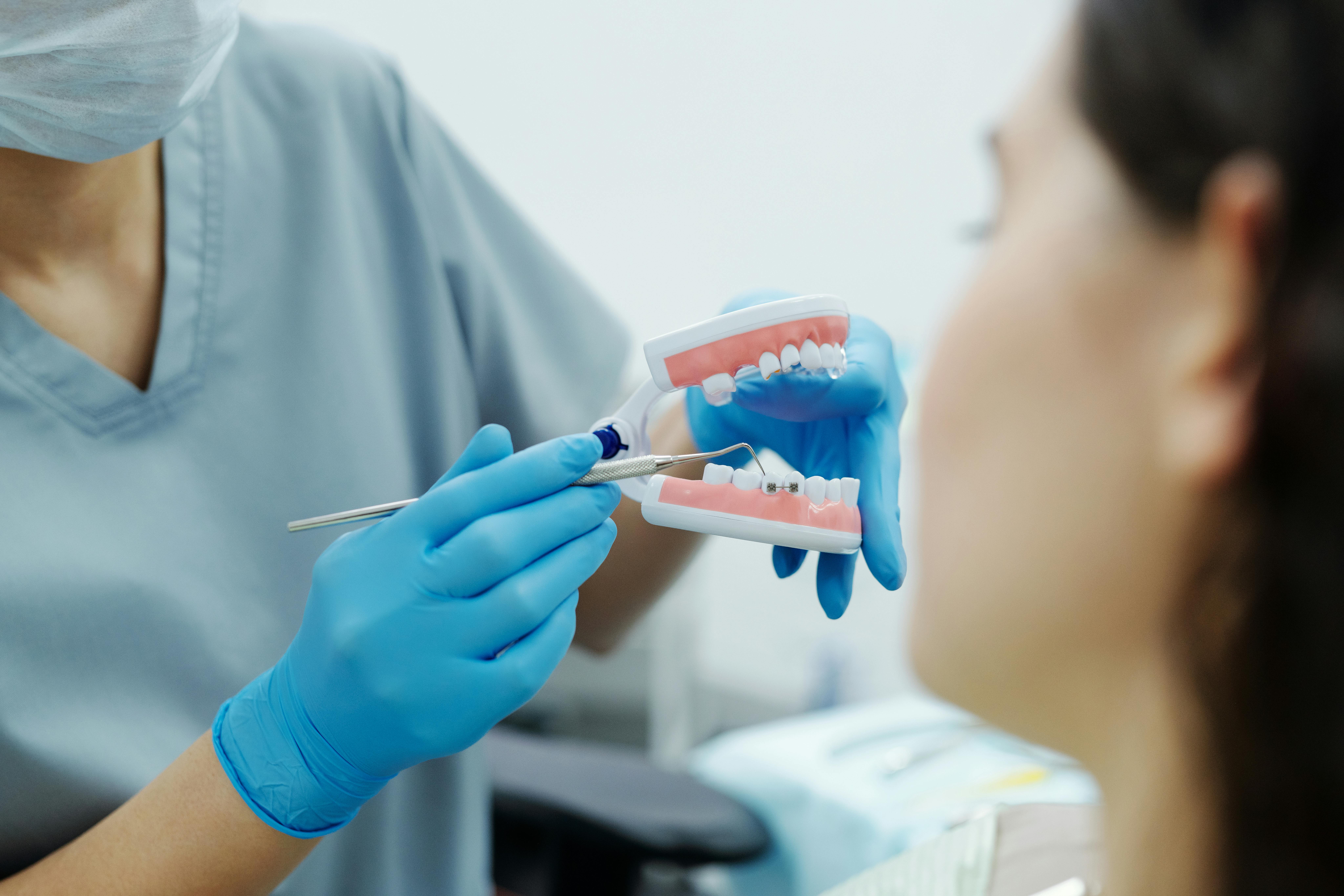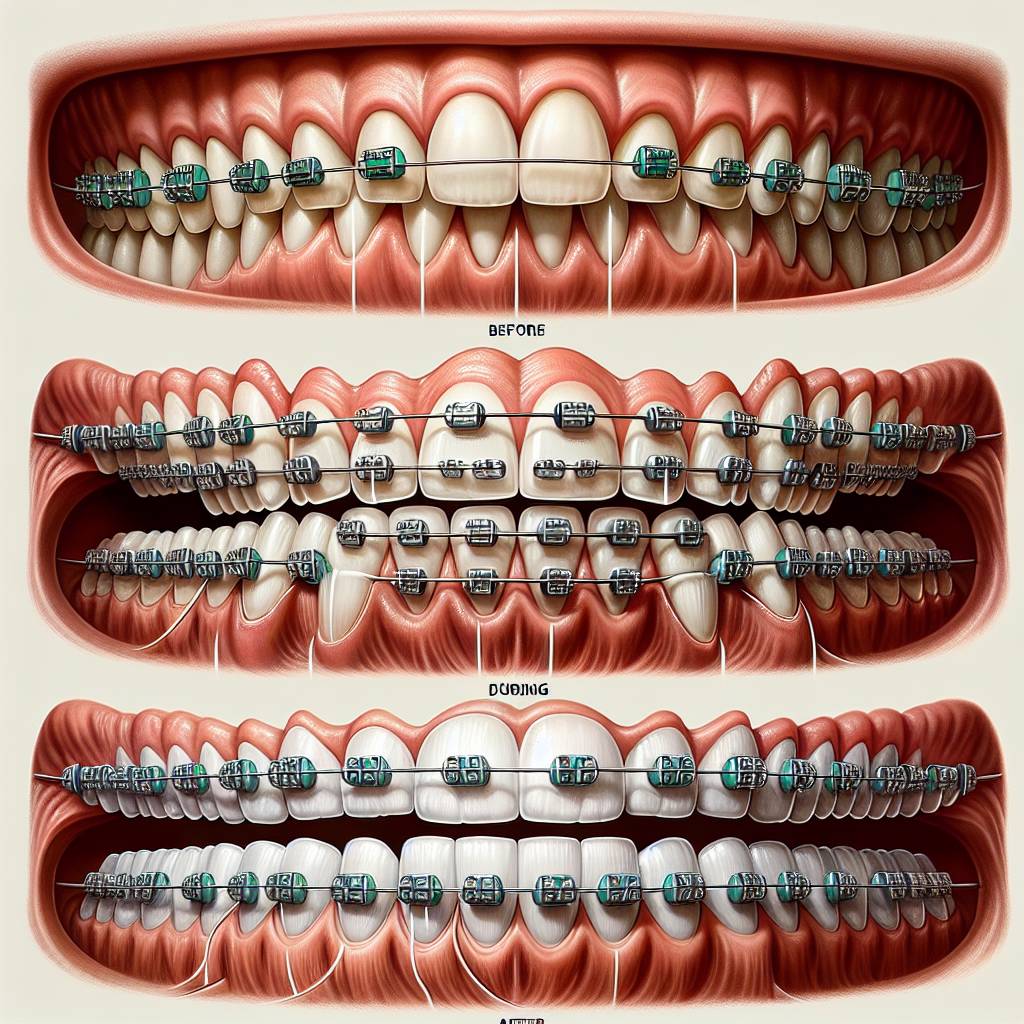Braces are an effective way to correct crooked teeth and enhance your smile. Depending on the severity of the misalignment, the amount of time needed to wear braces can vary greatly. In general, treatment time with braces is typically between 18-24 months, but may be shorter or longer depending on your individual needs. The length of time may also be affected by other factors such as age, severity of misalignment, and compliance with recommended treatment instructions. By understanding the typical timeline and expectations associated with braces treatment, you can have a better idea of what to expect during your orthodontic journey.The average amount of time needed to straighten crooked teeth with braces is typically between 18 and 24 months. This may vary depending on the individual case and the severity of the misalignment.
How Long Does It Take To Correct Crooked Teeth With Braces?
The amount of time needed to correct crooked teeth with braces depends on the severity of the misalignment. Mild cases can take as little as six months, while more complicated cases can take up to two years. In general, most people receive their braces for a period of 18 to 24 months. During this time, adjustments are made periodically in order to gradually move the teeth into their desired position.
The orthodontist will be able to give you a better estimate once they have evaluated your teeth and discussed your treatment goals. They will also be able to provide information on how often you should expect visits for adjustments and what kind of progress you can expect over that period of time.
In addition to braces, there are other treatments available that may help correct crooked teeth more quickly. These include clear aligners such as Invisalign or Six Month Smiles, which can typically take between 6-12 months depending on the severity of the misalignment.
No matter which treatment option you choose, it is important to follow your orthodontist’s instructions and attend all follow-up appointments in order to get the best results in the shortest amount of time possible.
Factors Determining the Length of Time for Wearing Braces
Wearing braces for crooked teeth is a common practice in orthodontics. The length of time that you need to wear braces depends on several factors. Severity of misalignment, age, and treatment plan are some of the primary considerations when determining how long you should wear braces for crooked teeth.
Severity of Misalignment
The severity of your misalignment will play a major role in determining how long you need to wear braces for crooked teeth. If you have minor misalignment, such as slightly crooked teeth, your orthodontist may recommend that you wear braces for a shorter period of time than if you have more severe misalignment. The amount of time needed to correct your misalignment will also depend on the type of braces used and the number of appointments required.
Age
Age can also be a factor in determining how long you should wear braces for crooked teeth. Generally speaking, younger patients may require less time wearing braces than adults due to their faster rate of growth and development. Additionally, some orthodontists may suggest that older patients use clear aligners or other more discreet methods to correct their misalignment rather than traditional metal brackets and wires.
Treatment Plan
Your orthodontist will create a personalized treatment plan based on your specific needs and goals, which can influence the length of time it takes to complete your treatment with braces. This plan will include regular checkups with your orthodontist so they can monitor the progress of your treatment and make any necessary adjustments along the way. Depending on the complexity of your case, this process could take anywhere from six months to two years or longer.
Overall, it is important to consult with an orthodontist to determine the best course of action based on your individual needs and goals when it comes to wearing braces for crooked teeth. By understanding all factors involved in determining how long you should wear braces for crooked teeth, you can have peace of mind knowing that you are receiving personalized care tailored specifically for you.
Braces
Braces are the most common treatment for crooked teeth. They use metal brackets and wires to apply pressure to the teeth, gradually moving them into place over a period of time. Braces can be used to correct issues like overcrowding, misalignment, and overbites. While traditional braces are the most common type of braces, they can come in a variety of styles and materials, including ceramic and clear braces.
Invisalign
Invisalign is a popular alternative to traditional braces that uses a series of clear plastic aligners to gradually move the teeth into place. The aligners are custom-made for each patient and must be replaced every two weeks until the desired results have been achieved. Invisalign is a great option for adults who want to straighten their teeth without the hassle of traditional braces.
Retainers
Retainers are often used after braces or Invisalign treatment to keep the teeth in their new position. Retainers are usually made from plastic or metal and fit comfortably in the mouth. They help prevent the teeth from shifting back into their original positions after treatment has been completed.
Veneers
Veneers are thin shells that are applied directly to the front surface of the teeth to hide any imperfections or irregularities. Veneers can be used to correct issues like gaps between teeth, discoloration, or minor misalignment issues. They’re also an ideal option for those who want an instant transformation without having to undergo orthodontic treatment.
Do I Need Braces for Crooked Teeth or Can It Be Corrected Without Them?
Crooked teeth can be corrected without braces depending on the severity of the misalignment. If the teeth are only slightly misaligned, orthodontic treatment may not be necessary. In cases where the teeth are more severely misaligned, braces may be recommended to restore the teeth to their proper alignment.
In cases where braces are not necessary, other treatments such as Invisalign or retainers may be recommended. Invisalign is a series of clear plastic aligners that are custom-made to fit your teeth and gradually move them into their correct position. Retainers are also used to keep your teeth in their proper position after orthodontic treatment has been completed.
It is important to consult an orthodontist if you think you have crooked teeth or want to correct misalignment issues. An orthodontist will be able to assess your situation and recommend the best treatment for you based on your individual needs and preferences. They will also be able to advise you on how long the treatment will take and what kind of maintenance is required after treatment is completed.
Braces may not always be necessary for crooked teeth, but it is important to consult with an orthodontist in order to determine the best course of action for correcting misalignment issues. Your orthodontist will be able to provide you with personalized advice so that you can make an informed decision about your oral health care needs.

Alternative Treatments To Correct Crooked Teeth Other Than Braces
Crooked teeth can be a source of embarrassment for many people. While braces have traditionally been the go-to treatment for misaligned teeth, there are other options available. Alternative treatments to correct crooked teeth can provide a less invasive and more discreet approach to achieving a beautiful smile.
Invisalign is one of the most popular alternatives to braces. Invisalign involves wearing clear plastic aligners that gradually shift your teeth into place. This treatment is virtually invisible and often more comfortable than braces. Invisalign can also be removed for eating and cleaning, making it easier to maintain good oral hygiene than with traditional braces.
Dental veneers are another way to correct crooked teeth without braces. Veneers are thin shells of porcelain or composite material that are glued to the front of your teeth. They can be used to mask discoloration, chips, or gaps between the teeth, as well as misalignment. Veneers require minimal tooth preparation and can usually be applied in one visit to the dentist’s office.
In some cases, it may also be possible to use dental bonding as an alternative to braces for crooked teeth. Dental bonding involves applying a tooth-colored composite resin material directly onto the tooth surface in order to reshape or lengthen it. Bonding is usually completed in just one visit and does not require any preparation of the tooth surface like veneers do.
Orthodontic headgear is yet another option for correcting crooked teeth without braces. This type of treatment involves wearing an appliance around the head and/or neck that gently pulls on the jawbone and surrounding structures in order to shift them into proper alignment. Headgear is often used in conjunction with other orthodontic treatments such as braces or Invisalign, but can also be used on its own if necessary.
Finally, certain types of dental appliances may also be used as an alternative treatment for crooked teeth without having to use traditional braces or other orthodontic treatments like Invisalign or headgear. These appliances typically involve wearing a removable device inside the mouth that gradually shifts your teeth into place over time with minimal discomfort or inconvenience compared to traditional orthodontic treatments.
Overall, there are several alternative treatments available when it comes to correcting crooked teeth without having to resort to traditional metal braces. Depending on your individual needs and preferences, you may decide that one of these options is right for you instead of going with more traditional methods such as brackets and wires.
Short-Term Treatments To Straighten Crooked Teeth
Straightening crooked teeth without braces can be done in the short-term with a few treatment options. One of the most common treatments is using clear aligners, which are custom-made and non-invasive plastic aligners that fit snugly over your teeth. Clear aligners can typically be worn for up to two years and can be removed for eating, brushing, and flossing. Another option is to use veneers, which are thin shells of porcelain placed on the front teeth. Veneers are highly customizable and can also help to improve the appearance of your smile. In some cases, they can even be used to straighten misaligned teeth. Finally, there is the option of using dental bonding or contouring to reshape and correct minor imperfections in your teeth. This procedure involves using a resin material to fill in gaps or chips in the tooth enamel or contouring existing enamel to make it more symmetrical. While these treatments are not as effective as braces in correcting severe misalignment, they may be a good solution for minor alignment issues.
Overall, there are many short-term treatments available that can help you straighten crooked teeth without having to wear braces. It is important to consult with a dentist or orthodontist first so they can determine which treatment is best for you based on your unique needs and goals.
How Long Will My Mouth Have To Be Open For A Long Time During Treatment With Braces For Crooked Teeth?
The amount of time your mouth needs to be open for during treatment with braces for crooked teeth will depend on the severity of the misalignment. Generally speaking, it will likely be necessary for your mouth to be open for longer periods of time as the treatment progresses. Your orthodontist will likely start off by having you keep your mouth open for just a few minutes at a time and then gradually increase this amount as needed.
Your orthodontist may also use special tools or techniques during their treatments which can help reduce the amount of time that your mouth needs to stay open. For example, they may use an intraoral camera, special forceps, or even a laser to help make adjustments to the braces more quickly and efficiently.
It is also important to keep in mind that everyone’s mouths are different and therefore the amount of time that your mouth needs to stay open may vary from person to person. Your orthodontist will be able to assess your situation and provide you with an estimate of how long your mouth needs to remain open during each appointment.
In most cases, it is unlikely that you will need to keep your mouth open for extended periods of time during treatment with braces for crooked teeth. However, it is important that you follow all instructions provided by your orthodontist so that they can ensure that your treatment is progressing as smoothly as possible.
By following their advice and keeping up with regular check-ups, you should be able to get through treatment in a timely manner without having to keep your mouth open for too long at any given appointment.

Conclusion
The duration of time you need braces for crooked teeth depends on the extent of the misalignment. Most people wear braces for 12-24 months, however some cases may take up to 36 months. The best way to determine how long you need to wear them is to consult with your orthodontist. It is important to note that while wearing braces, regular check-ups and adjustment appointments are necessary in order to ensure that the treatment is progressing as expected.
It is also important to practice good oral hygiene while wearing braces, as this can help speed up the process of straightening your teeth. With diligent care and patience, you can achieve a beautiful smile in no time!

